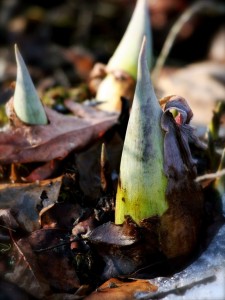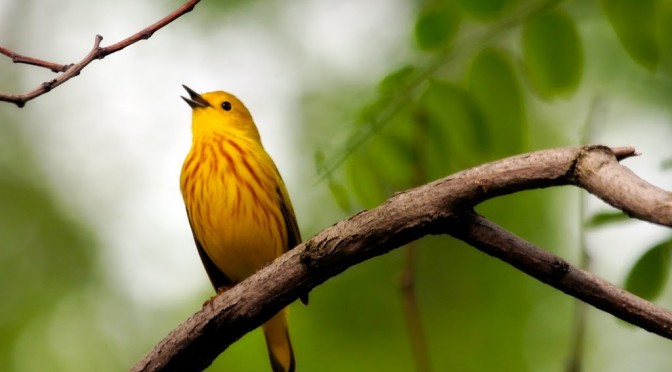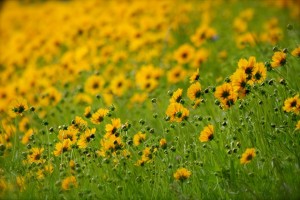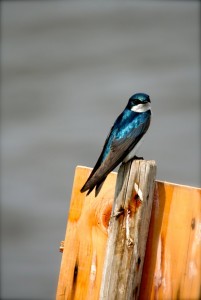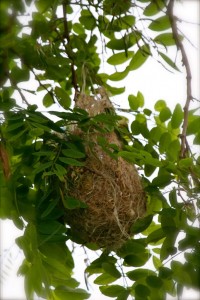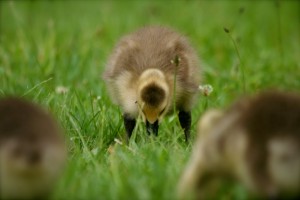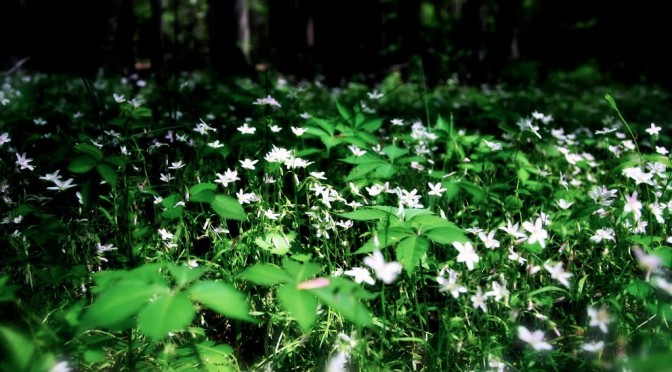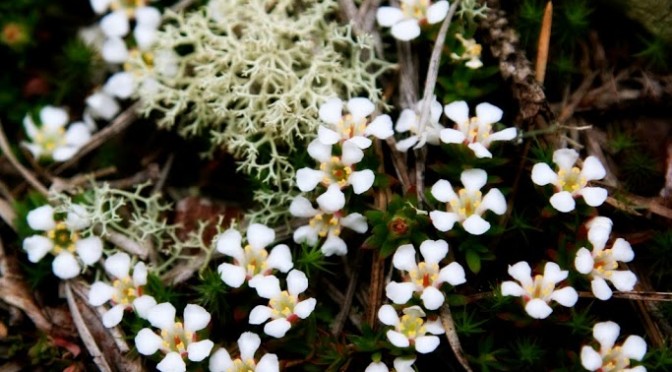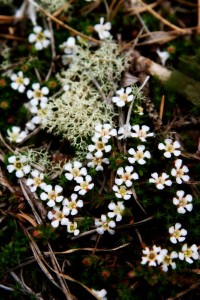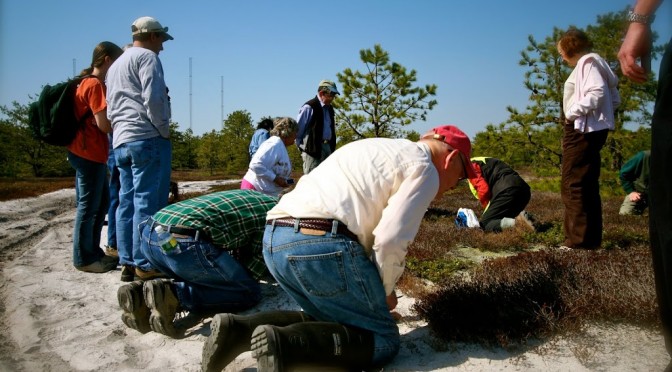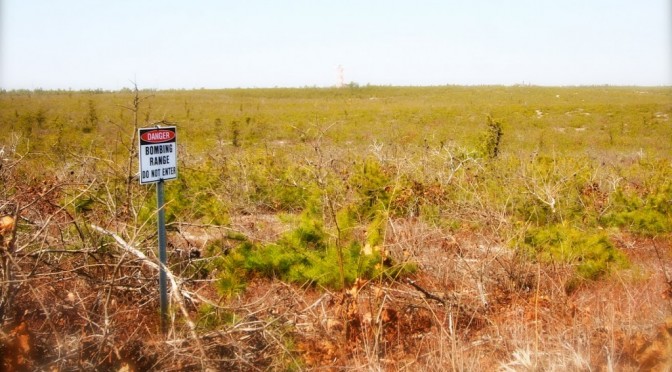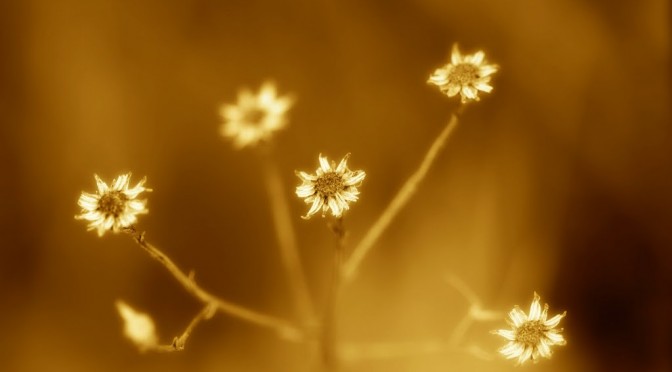A few warmish days here had the skunk cabbage showing signs of life.
Category Archives: Wildflowers
Today
Birds are still singing;
the trees are long past their first delicate greening.
Peepers at the roadside are suddenly quiet.
The northward surge of Spring is past us now.
Canada Mayflowers put on quite a show this year
and I found my first blooming Starflower
(but the photo was awful!)
in boxes and under bridges,
gathering twigs and feathers.
from vines and rootlets
and whatever magic things they can weave together.
😉
Lots and lots of babies!
I’m planting flowers of my own
and reading books
(and remembering how much I love the poetry of the Spanish language.)
I’m checking-off lists
and working on this year’s.
It’s a big one!
I’m planning a very private party to celebrate
and wanting to wander some, to contemplate
and squander time, letting it pass ungathered and unregretted.
There’s no pictures yet to share.
What’re you up to?
Side of the road
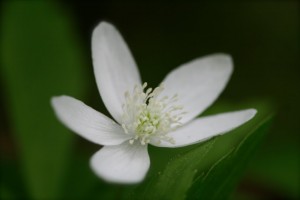 You wait in the car on the side of the road
You wait in the car on the side of the road
Lemme go and stand awhile
I wanna know you’re there, but I wanna be alone
If only for a minute or two
I wanna see what it feels like to be without you
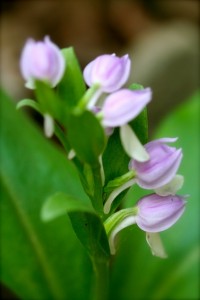 I wanna know the touch of my own skin
I wanna know the touch of my own skin
Against the sun, against the wind
If I stray away too far from you, don’t go and try to find me
It doesn’t mean I don’t love you, it doesn’t mean I won’t come back and stay beside you
 It only means I need a little time
It only means I need a little time
To follow that unbroken line
To a place where the wild things grow
To a place where I used to always go
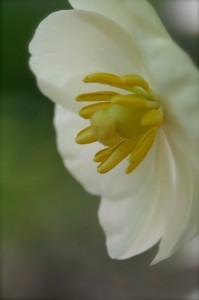 If only for a minute or two
If only for a minute or two
I wanna see what it feels like to be without you
I wanna know the touch of my own skin
Against the sun, against the wind.
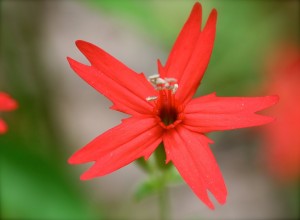 A thousand miles there and back to spend a day with friends, old and new, gathered for the New River Birding and Nature Festival might seem crazy to some…
A thousand miles there and back to spend a day with friends, old and new, gathered for the New River Birding and Nature Festival might seem crazy to some…
In fact, probably it was crazy to do, but the singing birds, the people, the chance to wander alone looking for wildflowers in those riotously rich West Virginia mountains … it’s all kinda irresistible to me.
Lyrics from “Side of the Road” by Lucinda Williams.
Photos:
(1) Windflower (Anemone sp.) Among my favorite wildflowers, Anemones are heartbreakingly beautiful and delicate
(2) Showy Orchis (Orchis spectabilis) I dragged Jim McCormac out in the near dark yesterday to show me where to find this beauty
(3) A giddy me photographing blooming May-Apples
(4) May Apple flower (Podophyllum peltatum) The parasol-like foliage of May-Apples is cool enough, but the flowers are especially lovely; more so cause you have to lie with your face in the dirt to photograph them where they hide beneath the leaves
😉
(5) Fire Pink (Silene virginica) So named not because of their color, obviously, but because of the scissor-like notches on the petals… thanks Susan!
Fire Pink and silly me photos by MevetS.
One swallow
One swallow does not make a summer, but one skein of geese, cleaving the murk of March thaw, is the Spring. – Aldo Leopold
Early spring is a season of small flowers, of course, and one Spring Beauty or one Violet is of no consequence…
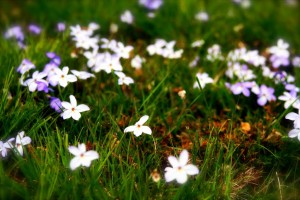 but a carpet of them, sneaking up through the blanket of last year’s leaves or the first green grass where the sun beckons…
but a carpet of them, sneaking up through the blanket of last year’s leaves or the first green grass where the sun beckons…
that’s the Spring!
*the Violet is Viola brittoniana,a South Jersey specialty.
Pine Barren Beauty
This pretty little creeping plant is found only in the pine barrens of New Jersey and North Carolina; it creeps like a vine, looks like a moss and flowers like an herb, but is really a shrub; that is, its stems are woody. It forms small evergreen mats resembling mossy cushions and blooms in early Spring.
The name, shortened to Pyxie, delightfully suggests the fairy folk to whom the name belongs. Smiling upward from the sandy soil in the April sunshine, this tiny plant wields an incredible charm; especially so because I went out today not expecting to find much of note. As is so often the case with the Pine Barrens, I was pleasantly rewarded!
Botanical info from Our Early Wildflowers by Harriet Keeler, 1916 and Wildflowers of the Pine Barrens of NJ by Howard Boyd, 2001
For the wayfarer
You have to kind of wonder when, on a trip for the earliest blooming flower in the Pine Barrens, you step out of the car to find most everyone on their knees in the sand, peering into the vegetation with hand lenses or macro lenses.
What the heck?
I wondered just what bag of goods the Pinelands Preservation Alliance (via MevetS) had sold me on this trip… as if the setting on a bombing range weren’t crazy enough!
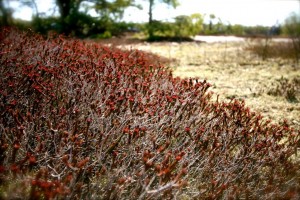 These tiny plants and their diminutive *flowers* were our focus.
These tiny plants and their diminutive *flowers* were our focus.
My focus on them was never very good, by the way, because they’re so darn tiny!
Broom Crowberry is a very special plant, not only because it’s among the earliest of bloomers, but also because it’s quite rare outside of the pine plains habitat. Plant geeks seem to love it, despite its drab appearance. I was sort of less-than-excited about it cause I wanted SPRING! and PINK! and FLASHY! but whatever.
This attitude is probably exactly why I need to go on these trips… don’t you think?
😉
I love the Pine Barrens, but its beauty is very subtle. It doesn’t give away its treasures easily, I know. You have to drive and then hike past thousands of pitch pines and scrub oaks, get lost countless times on sugar sand roads that all look the same, sweat and freeze and question your sanity and then, maybe, she shows you something wonderful for your efforts.
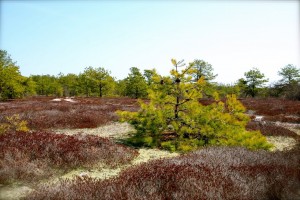 Where it grows well, Broom Crowberry grows in great mats across the sand… it likes to be out in the open under the sun and flourishes, according to plant geeks who study these things, in areas of disturbance… hence our visit to the bombing range (and the area near some power lines where these photos were taken). Like so many Pine Barrens endemics, it’s well-adapted to fire… in areas that aren’t regularly burned (or bombed!) it’s shaded out by tall trees or shrubs.
Where it grows well, Broom Crowberry grows in great mats across the sand… it likes to be out in the open under the sun and flourishes, according to plant geeks who study these things, in areas of disturbance… hence our visit to the bombing range (and the area near some power lines where these photos were taken). Like so many Pine Barrens endemics, it’s well-adapted to fire… in areas that aren’t regularly burned (or bombed!) it’s shaded out by tall trees or shrubs.
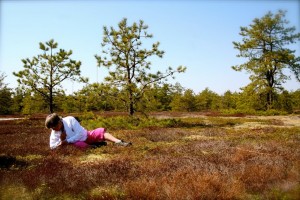 We learned that botanists (among them Alexander Wilson of ornithological fame) traveled from Philadelphia to the Pinelands to find these plants and Thoreau described Broom Crowberry as “a soft, springy bed for the wayfarer”.
We learned that botanists (among them Alexander Wilson of ornithological fame) traveled from Philadelphia to the Pinelands to find these plants and Thoreau described Broom Crowberry as “a soft, springy bed for the wayfarer”.
Indeed.
😉
Mortal injury may result
Of all the crazy places I’ve been birding… sewerage treatment facilities, nuclear power plants, landfills… this takes the cake, I think.
😉
And mostly we were looking for wildflowers.
(And not ever in the target range, at least I don’t think so!)
Photo from the Warren Grove Gunnery Range in the heart of the pygmy pine forest of the NJ Pine Barrens.
Winter color
Too easily forgotten
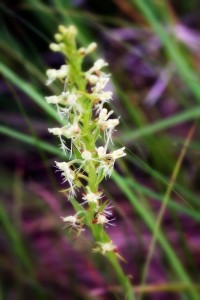 A lecture and slide presentation yesterday sponsored by SHBO on NJ’s native orchids has me reviewing photos from this place and drooling with the memory of it.
A lecture and slide presentation yesterday sponsored by SHBO on NJ’s native orchids has me reviewing photos from this place and drooling with the memory of it.
One problem with waiting forever to process photos is the forgetting of details that happens in between.
😉
I’ve all these photos of drop-dead-gorgeous flowers and can hardly remember the name of one of them!
I’m thinking this one is Ragged Fringed Orchid, as the deeply fringed petals make the flower look pretty tattered.
Am I right? Anyone know? Jim?
Midsummer minutiae
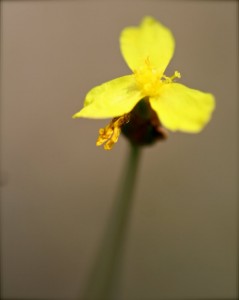 I love tiny, tiny flowers and the littlest details revealed with a close-up. I haven’t discovered the skill yet, with a very fussy macro lens, to reliably get all of the flower in sharp focus, but instead let the camera choose its point of interest. Sometimes we agree on what’s interesting, but often not. I liked the rich brown scaly head below the petals of this Yellow-eyed grass, but the camera had other ideas.
I love tiny, tiny flowers and the littlest details revealed with a close-up. I haven’t discovered the skill yet, with a very fussy macro lens, to reliably get all of the flower in sharp focus, but instead let the camera choose its point of interest. Sometimes we agree on what’s interesting, but often not. I liked the rich brown scaly head below the petals of this Yellow-eyed grass, but the camera had other ideas.
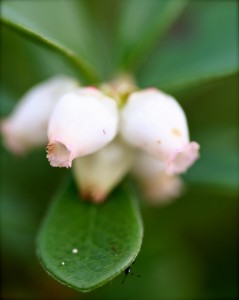 The barely pink urn-shaped flowers of Bearberry are a treat in mid August. This plant was obviously confused; flowering when it should be bearing fruit. The ant on the underside of the most forward leaf distracted both me and the lens.
The barely pink urn-shaped flowers of Bearberry are a treat in mid August. This plant was obviously confused; flowering when it should be bearing fruit. The ant on the underside of the most forward leaf distracted both me and the lens.
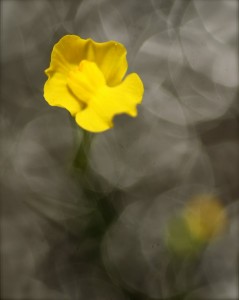 I’m not sure which of the Bladderworts this is, but the effect of the water and the angle of the sun is pretty psychedelic! I can’t ever produce this effect on purpose, but I’m tickled when the lens makes it happen by surprise.
I’m not sure which of the Bladderworts this is, but the effect of the water and the angle of the sun is pretty psychedelic! I can’t ever produce this effect on purpose, but I’m tickled when the lens makes it happen by surprise.
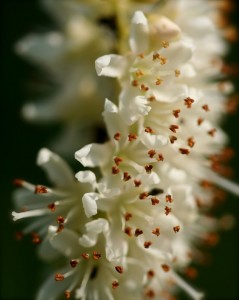 Sweet pepperbush and its tiny fragrant flowers… as abundant as blueberries in the Pine Barrens, but not as tasty.
Sweet pepperbush and its tiny fragrant flowers… as abundant as blueberries in the Pine Barrens, but not as tasty.
😉
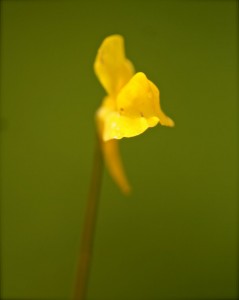 I was up to my ankles in mucky water when I took this one, but a close-up of Horned bladderwort requires that, almost. I love the flower’s yellow spur. There’s some 11 species of bladderworts in the Pine Barrens, yet I’ve only ever seen 2 or 3 of them.
I was up to my ankles in mucky water when I took this one, but a close-up of Horned bladderwort requires that, almost. I love the flower’s yellow spur. There’s some 11 species of bladderworts in the Pine Barrens, yet I’ve only ever seen 2 or 3 of them.
Thanks to Steve for use of his macro… I needed a close-up flower fix!
